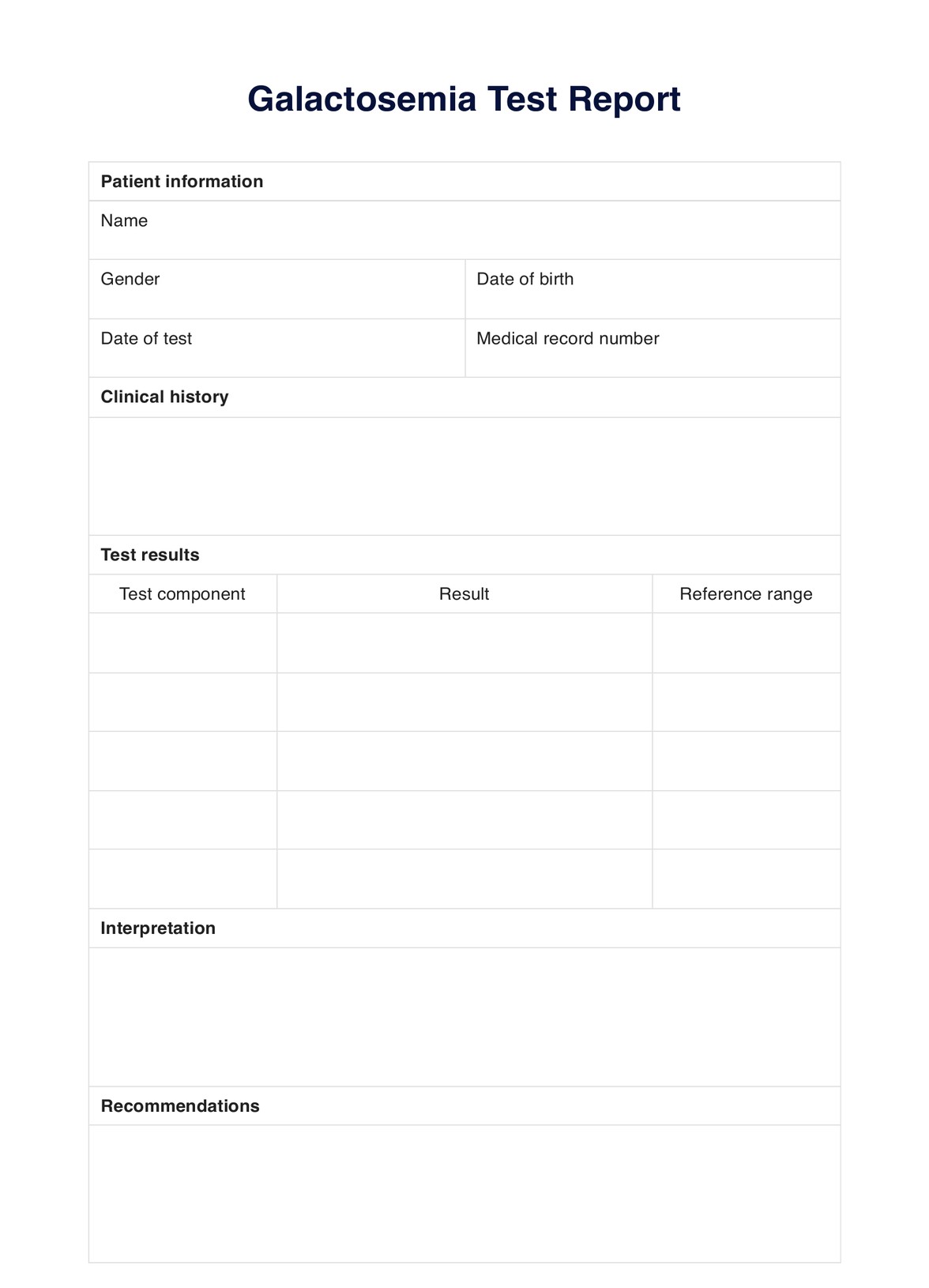Primary care physicians, pediatricians, and obstetricians may all request a Galactosemia Test if they suspect the condition in their patient.

Galactosemia Test Reports
Download a free Galactosemia Test Report template. Use it to record your patient's galactosemia test, including the results and analysis.
Use Template
Galactosemia Test Reports Template
Commonly asked questions
Galactosemia Tests are typically used when a patient presents with symptoms that suggest the condition or if there is a family history of galactosemia.
?
If a patient tests negative for galactosemia, no further testing is necessary unless there is a change in symptoms or family history. However, if a patient tests positive or inconclusive, follow-up testing may be recommended to monitor their condition.
EHR and practice management software
Get started for free
*No credit card required
Free
$0/usd
Unlimited clients
Telehealth
1GB of storage
Client portal text
Automated billing and online payments











